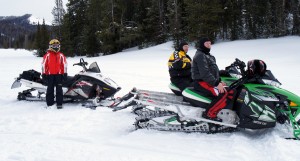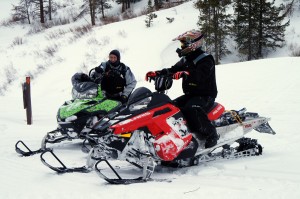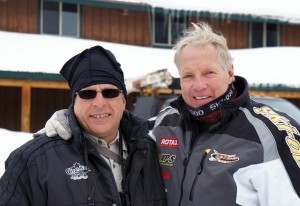 Years ago, I was told that seventy five percent of the cost of goods sold came from the transportation of those goods. I used to think that was an exaggeration until I considered the example of tools forged out of steel. From being iron ore in the ground to becoming a tool in your hand, just imagine how much transportation is involved from start to finish. If you think about that, you will agree that 75% of the cost of goods sold is a result of transportation. So, that brings me to the question: why is our country exporting most of the oil being extracted from US soil and allowing the price of fuel to climb? If you want to curb inflation, you must control the cost of goods sold. However, by selling our oil to China (or whatever country) and causing the price of diesel fuel to increase here, then the cost of goods sold will also increase, thus adding to inflation. Don’t our politicians know that inflation is what is killing our economy, our country and (probably) our people?
Years ago, I was told that seventy five percent of the cost of goods sold came from the transportation of those goods. I used to think that was an exaggeration until I considered the example of tools forged out of steel. From being iron ore in the ground to becoming a tool in your hand, just imagine how much transportation is involved from start to finish. If you think about that, you will agree that 75% of the cost of goods sold is a result of transportation. So, that brings me to the question: why is our country exporting most of the oil being extracted from US soil and allowing the price of fuel to climb? If you want to curb inflation, you must control the cost of goods sold. However, by selling our oil to China (or whatever country) and causing the price of diesel fuel to increase here, then the cost of goods sold will also increase, thus adding to inflation. Don’t our politicians know that inflation is what is killing our economy, our country and (probably) our people?
Another thing that is killing people is diesel particulate filters (DPF) in emergency vehicles. I have received several e-mails about a trucker who was trapped inside his burning rig and the fire truck that was coming to his rescue had to pull over to the side of the highway while its DPF was going through its regen cycle. In addition to the obvious public safety issue, what’s worse for the environment – a fire truck putting out more than the allowable parts per million of soot or a fire that continues to burn? Maybe the California Air Resources Board (CARB) should do a study on what California’s annual wildfires do to their air quality and run those numbers against fire trucks that aren’t 2008 compliant just to put this all into perspective.
 Speaking of wildfires, DPFs have started quite a few. The high temperature regen cycles can ignite anything too close to the filter. With all this in mind, let’s step back and look at the big picture here. CARB’s job is to keep the air clean and save lives. How does crippling the reliability of a fire truck accomplish this task? And what about the ambulances? A read about a man who was having a heart attack and before the ambulance was able to reach him it had to pull to the side of the road and wait for its DPF to regen. Do DPFs on ambulances save lives? Even tow truck operators, many of whom are too busy hauling new trucks back to the dealerships because of EGR and DPF issues, are taking longer to respond to, and help clean up after, vehicle wrecks. Are these emission laws and DPFs really saving lives – or are they actually taking them?
Speaking of wildfires, DPFs have started quite a few. The high temperature regen cycles can ignite anything too close to the filter. With all this in mind, let’s step back and look at the big picture here. CARB’s job is to keep the air clean and save lives. How does crippling the reliability of a fire truck accomplish this task? And what about the ambulances? A read about a man who was having a heart attack and before the ambulance was able to reach him it had to pull to the side of the road and wait for its DPF to regen. Do DPFs on ambulances save lives? Even tow truck operators, many of whom are too busy hauling new trucks back to the dealerships because of EGR and DPF issues, are taking longer to respond to, and help clean up after, vehicle wrecks. Are these emission laws and DPFs really saving lives – or are they actually taking them?
Did you know that the ISX Cummins ECU or ECM has 6,400 parameters that affect the operation of the engine and the truck? If you accidentally change the wrong setting, you could have a disaster on your hands because every parameter is linked. Making just one wrong move starts a chain reaction that corrupts the operating system and turns the ECM into a lifeless paperweight. This is the most complex ECM we have ever worked on, but every day we are
making progress, working to improve what this great engine can do for you discerning owner operators out there.
 Do you hate the fact that your engine starts to cut back power at 1,500 rpm? Well, that can be changed. Back in the day, the old Big Cam Cummins engines were typically set at 1,800 and most were attached to an 8- or 9-speed transmission. Being that you were not able to split a gear, when shifted at 1,800 rpm into the next gear when pulling a hill, the rpm would come down to 1,100 or 1,200 where the engine was just dead. Those engines needed 1,500 rpm and higher to be able to pull a grade. Back then, we would install a 13-speed transmission and set the rpm to 2,200 or higher, and also increase the horsepower by at least 50, and gain better than a mile per gallon. What may work on the level parts of our country doesn’t always work on the hills or in the mountains. So, if you want your ISX to pull strong up to 2,000 rpm, you need to have that parameter changed.
Do you hate the fact that your engine starts to cut back power at 1,500 rpm? Well, that can be changed. Back in the day, the old Big Cam Cummins engines were typically set at 1,800 and most were attached to an 8- or 9-speed transmission. Being that you were not able to split a gear, when shifted at 1,800 rpm into the next gear when pulling a hill, the rpm would come down to 1,100 or 1,200 where the engine was just dead. Those engines needed 1,500 rpm and higher to be able to pull a grade. Back then, we would install a 13-speed transmission and set the rpm to 2,200 or higher, and also increase the horsepower by at least 50, and gain better than a mile per gallon. What may work on the level parts of our country doesn’t always work on the hills or in the mountains. So, if you want your ISX to pull strong up to 2,000 rpm, you need to have that parameter changed.
Our seventh annual Owner Operator Snowmobile Conference was recently held in Togwotee, Wyoming, and a wonderful time was had by all in attendance. Twenty-four people joined us and there was plenty of new snow for everyone. I asked owner operator Todd Straight to describe how he felt about the conference and here is what he had to say: “The conference was sixty percent camaraderie and forty percent snowmobiling. It was a pleasure to spend time with other owner operators away from their trucks. The employees at the lodge were great and hospitable. It was wonderful to see how everyone helped each other as a team when someone was stuck in the snow. Taking the break from trucking has improved my ability to handle the challenges at work, including my recent breakdown in North Dakota when I had an electrical failure. I loved the conference so much that I will surely be back next year to enjoy the companionship of fellow owner operators while snowmobiling.” Our thanks go out to everyone who attended the conference – it was a great time!
In life, you have to have some fun every once in a while to keep from getting burned out. We had a lot of fun and hope that more of you can join us next year at the conference. If you have any questions or comments, I can be reached at Pittsburgh Power Inc. in Saxonburg, PA at (724) 360-4080 or via e-mail at bruce@pittsburghpower.com.

1 Comment
So true about DPF etc. One city in California has a fleet of fire apparatus and in 2010 had about 170 incidences where a fire truck was in the shop for a maintenance issue; a reserve truck was in its place to make the response. Then in the first half of 2011, they had over 300 occurances where a fire apparatus was in the shop for an emissions related problem! This information was gleaned from firerescue1.com’s web site.
That little bit of soot coming out of the tail pipe of the fire apparatus is microscopic compared to the contaminants released by a structure fire. If an ambulance or fire truck is delayed due to “environmental issues” how would patient care be affected?!! (What if this patient was an EPA official and they had to wait for a response to arrive at their side to render aid.)
Our department has just received a Large rescue apparatus a month ago and the truck has been in the shop 50% of its time since delivery for various problems. The response crews are already loosing faith in this truck. Thank GOD we kept the old rescue as a reserve unit. At least it starts every time and makes it to location.